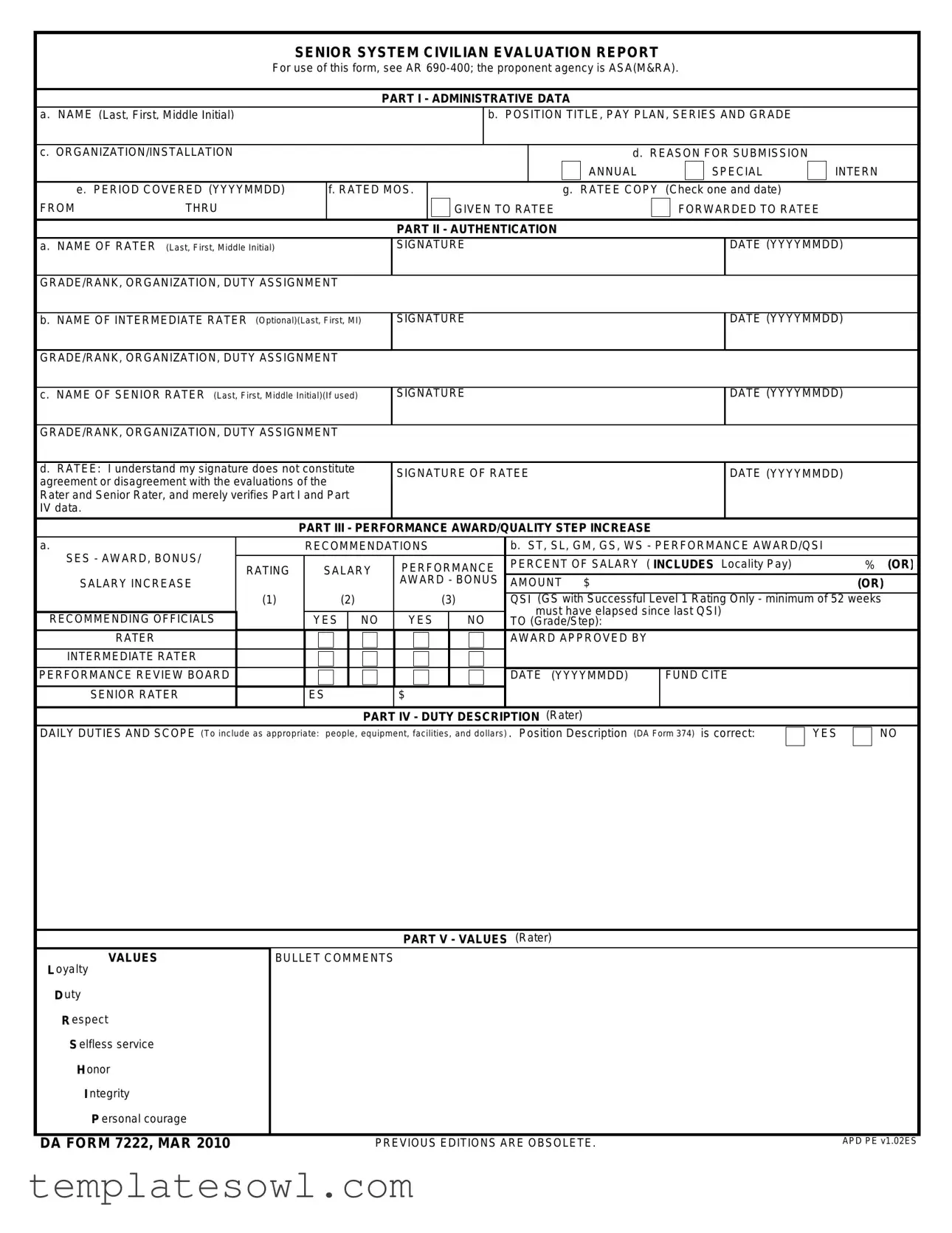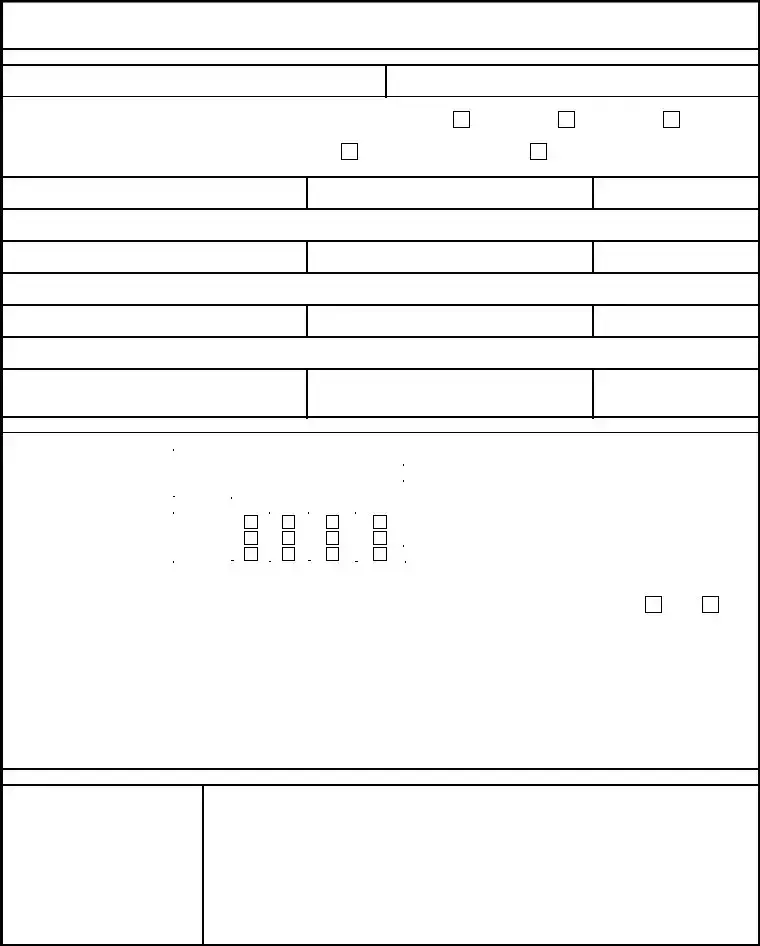Filling out the DA Form 7222-1 correctly is crucial for a proper performance evaluation. However, many people make mistakes. One common error is failing to provide complete names. In the ADMINISTRATIVE DATA section, ensure that the name is listed in the correct format: Last, First, Middle Initial. Neglecting this can delay the processing of the form and lead to unnecessary complications.
Another frequent mistake involves the submission reason section. Selecting the wrong reason for submission can mislead the evaluation process. Whether the evaluation is annual or special, it is vital to ensure that the correct option is checked, as it directly impacts the evaluation period and the overall intent of the submission.
Many individuals also inaccurately fill out the period covered section. This part requires the dates in a specific format (YYYYMMDD). A simple error here, like providing the wrong year or transposing the month and day, can result in significant misunderstandings regarding the rating period.
In the authentication section, missing signatures is a critical oversight. Each required signature, from the rated individual to the raters, ensures that everyone involved agrees to the contents of the evaluation. These signatures lend credibility to the form. Without these, the submission may be deemed incomplete.
Another mistake is found in the VALUES section. Evaluators often skip providing specific bullet comments that illustrate how the ratee exemplified the Army values. These comments are vital. They provide context and evidence, explaining assessments of loyalty, duty, respect, selfless service, honor, integrity, and personal courage.
Some people may overlook the importance of accuracy regarding recommendations or ratings in the PERFORMANCE AWARD section. Mistakes in this area can affect potential bonuses or raises. Entries must be precise and align with the overall performance evaluation presented.
In the PERFORMANCE EVALUATION section, failing to provide clear bullet examples is another common error. Without specific examples of performance, evaluation ratings may appear unfounded or subjective. Clear, detailed examples strengthen the evaluation's validity and make it easier for reviewers to understand the ratee’s contributions.
Individuals also sometimes forget to indicate whether they had an intermediate or senior rater. If applicable, not including this information means missing out on additional levels of oversight which can be essential for accurate evaluation. It can also create confusion about the evaluation hierarchy.
Lastly, a significant oversight involves neglecting to check all components of the form for completeness before submission. The form has several interrelated sections. Each needs careful attention. A thorough review ensures compliance with requirements and helps avoid issues that could arise later.




 Yes
Yes 
 No
No